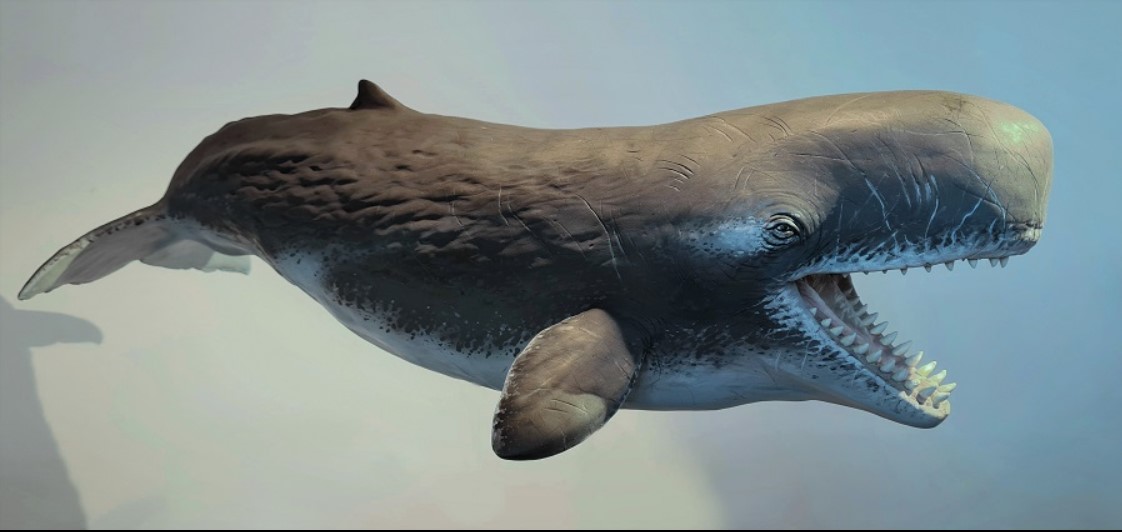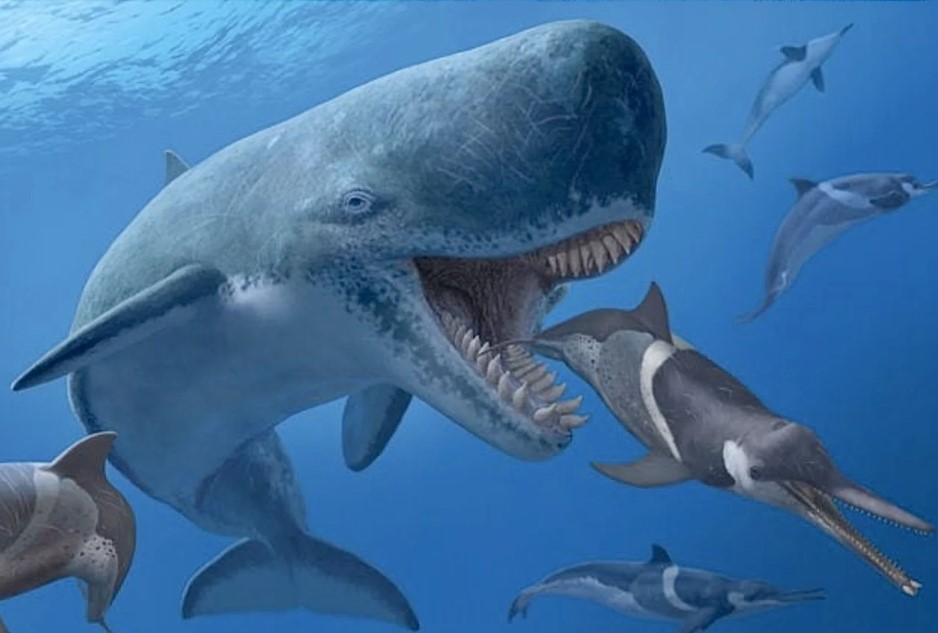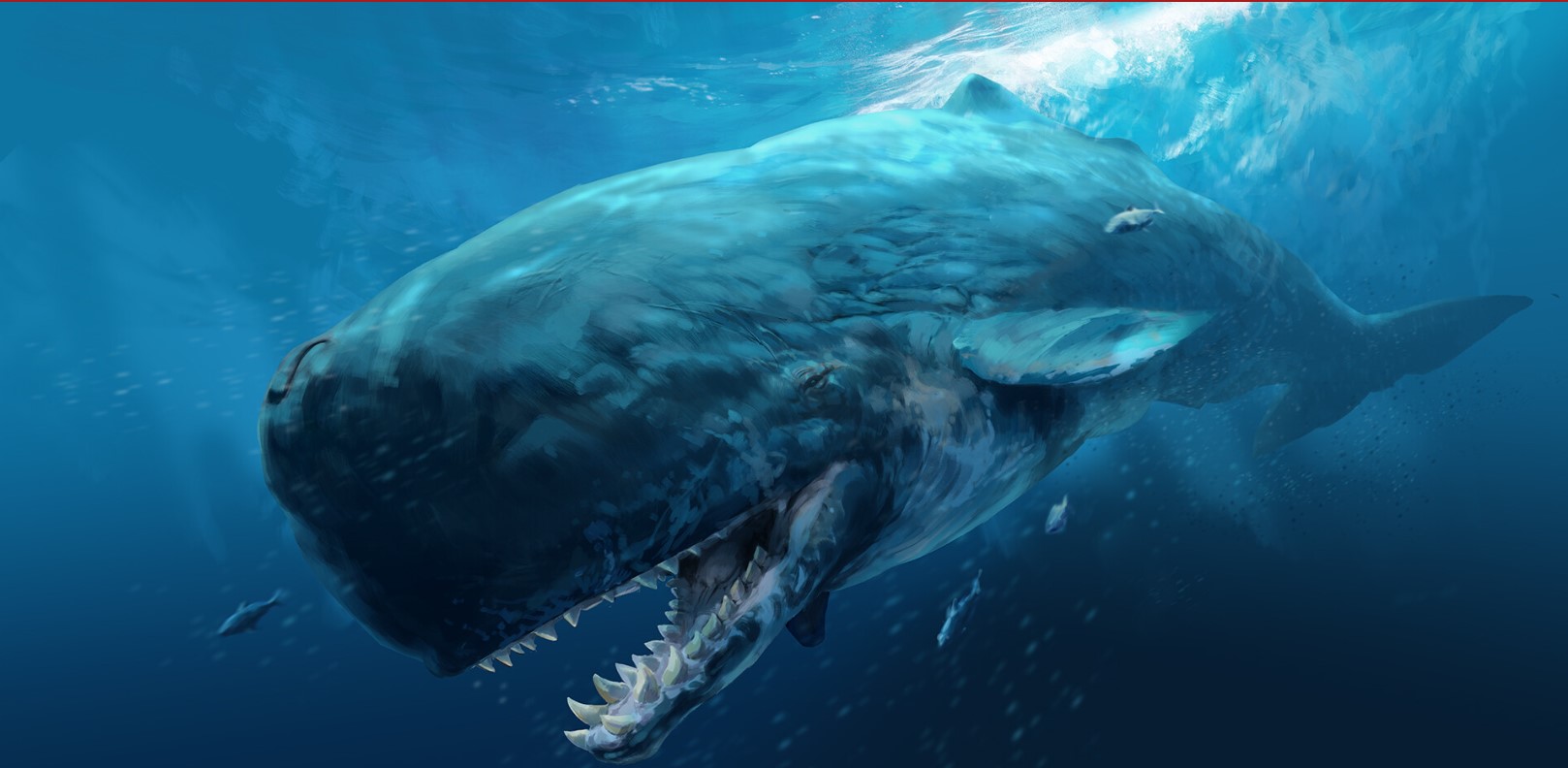





The Livyatan is an extinct species of cetacean that inhabited the southeastern Pacific Ocean. It is the only species of extinct whale in the genus Livyatan. It was a member of a group of macroraptorial sperm whales and was probably an apex predator of the ocean like an orca(Orcinus orca). These whales went extinct by the early Pliocene which is likely due to a cooling trend in the ocean.
The body length of Livyatan is still being determined since only the holotype skull is preserved. It has been estimated to weigh 57 tonnes based on a length estimate of 17.5 m. By comparison, the modern sperm whale length measures 11 m (36 ft) for females and 16 m for males, with some males reaching up to 20.7 m long. The large size was probably an anti-predator adaptation, allowing it to feed on larger prey. The skull and lower jaws of Livyatan are gigantic and massive. Unlike the modern sperm whale, Livyatan possessed massive, deeply rooted upper teeth and a short, wide snout. Similar to the modern sperm whale(Physeter macrocephalus), Livyatan exhibited a concave surface on the top of the skull called the supracranial basin, which presumably housed a large fluid-filled sac called the spermaceti organ. Unlike the modern sperm whale, Livyatan had functional teeth in both jaws. The wearing of the teeth indicates that the teeth sheared past each other while biting down, meaning they could bite off large portions of flesh from their prey. Also, the teeth were deeply embedded into the gums and could interlock, which were adaptations to holding struggling prey. The teeth of Livyatan are large (14 inches long, 4-5 inches in width – nearly the size of a 2-liter bottle of soda, and more than double the size of the largest known Tyrannosaurus rex teeth) and have sharp tips.
Livyatan was related to a group of extinct whales called macroraptorial sperm whales. It also included Brygmophyseter, Acrophyseter, and Zygophyseter. The snout and the teeth of Livyatan indicate that it fed in a manner that is very different than the modern sperm whale. The robust snout and massive lower and upper teeth of Livyatan are evidence that its prey was larger and tougher than squid. Livyatan preyed upon baleen whales and other large marine mammals.
Livyatan went extinct by the early Pliocene likely due to a cooling trend causing baleen whales to increase in size and decrease in diversity, becoming extinct with the smaller whales they fed on. Their extinction also coincides with the emergence of the orcas as well as large, predatory oceanic dolphins. The competition for food became too much for this cetacean, and it couldn’t keep up with the changing times.